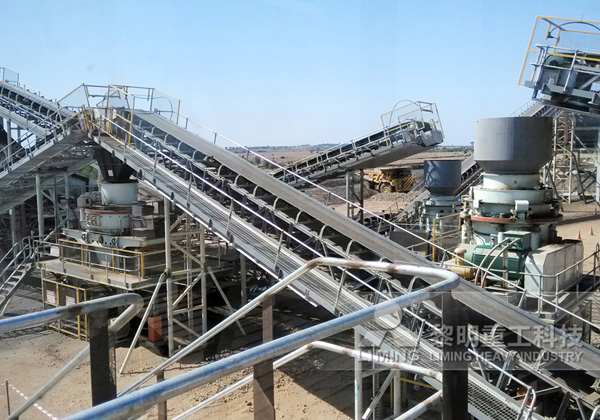An aggregate crushing plant is a key facility in the production of construction materials such as gravel, crushed stone, and sand. Proper configuration ensures efficient operation, high productivity, and consistent product quality. Below are the essential components and processes that make up a standard aggregate crushing plant.
1. Feeding System
The first stage in the crushing process involves feeding raw materials (such as rocks, boulders, and recycled concrete) into the plant. Common feeding equipment includes:
- Vibrating Grizzly Feeder: Separates fine materials (like soil) and ensures a steady feed to the primary crusher.
- Hopper & Apron Feeder: Used when dealing with sticky or wet material to prevent clogging.
2. Primary Crushing
The primary crusher reduces large rocks into smaller pieces (around 100–250 mm). Common primary crushers include:
- Jaw Crusher: Best for hard and abrasive materials (e.g., granite, basalt).
- Gyratory Crusher: Suitable for high-capacity operations in large quarries.
- Impact Crusher (for soft rock): Used for less abrasive materials like limestone.

3. Secondary Crushing
Secondary crushers further reduce the size of the material (around 20–50 mm). Common choices:
- Cone Crusher: Ideal for hard rocks, producing well-shaped aggregates.
- Impact Crusher: Good for softer materials, providing better grain shape.
4. Screening & Classification
After crushing, the material is screened into different sizes using:
- Vibrating Screens (Multi-deck): Segregates material into various grades (e.g., 0–5mm, 5–15mm, 15–25mm, etc.).
- Sand Washing Machine (if needed): Cleans fine particles for high-quality sand.
5. Tertiary Crushing & Shaping
For producing finer aggregates or sand (less than 10 mm):
- Vertical Shaft Impact (VSI) Crusher: Enhances cubical particle shape for concrete and asphalt aggregates.
- Horizontal Shaft Impact (HSI) Crusher: Used for high-quality end products.
6. Conveying & Stockpiling
- Belt Conveyors: Transport material between stages efficiently.
- Stockpiling Equipment: Stores different aggregate sizes before distribution or further processing.
7. Dust Control & Environmental Measures
- Water Spray Systems: Reduce dust emission.
- Enclosed Conveyors & Hoods: Minimize airborne particles.
- Baghouse Filters: Used in large-scale plants for air filtration.
Common Configuration Examples
- For Hard Rock (Granite, Basalt):
- Jaw Crusher + Cone Crusher + VSI Crusher + Vibrating Screens
- For Soft Rock (Limestone):
- Jaw Crusher + Impact Crusher + Vibrating Screens
- For Sand Production:
- Cone Crusher + VSI Crusher + Sand Washer
The configuration of an aggregate crushing plant depends on factors like material hardness, desired output size, and production capacity. Proper selection and arrangement of equipment ensure efficiency, durability, and compliance with industry standards. Consulting with experts can help tailor the plant setup to specific project requirements.

